Apps I Use Daily as a Solopreneur Slasher
- Joyce Tsang
- Aug 14
- 7 min read
Updated: Sep 2

Wearing five hats as a solopreneur—creator, strategist, marketer, communicator, and more—can feel like a constant juggling act. To stay productive and sane, I rely on a curated set of apps that streamline my workflow and keep me focused.
Most solopreneurs aren’t “too busy”—they’re just operating without a documented system. In this post, I’ll share the tools and habits that transformed my chaos into clarity.
Without a clear structure:
You don’t instinctively know what to do at different times of day.
You waste time figuring out your next move.
You don’t know which tasks drain your energy most—making it harder to schedule effectively.
I’m probably a living example that if you want to do a lot—and do it well—you can. The first step is to stop resisting the idea of building habits. From there, identify tools that consolidate tasks, streamline your workflow, speed up processes, and most importantly, allow delegation by having strong foundations in place.
So, without further ado, here’s a peek into my daily digital toolkit of solopreneur apps:
Recommendation on Solopreneur Apps
Morning Ritual: Email Management with Zoho + Sanebox

I used to hire a freelance PA to manage my inbox. That cost me an hour of their time—and money. Sure, they could manually sift through the mountain of subscriptions and incoming emails, but mistakes happened, and I still had to review things myself.
When my PA returned to corporate life, I needed a smarter solution. That’s when I found Sanebox.
What Sanebox Does:
Uses AI to sort emails into smart folders like SaneLater, SaneNews, and SaneBlackHole
Filters out distractions and prioritizes important messages
Sends reminders and follow-ups for emails that need action
Integration & Benefits:
Works with Zoho, Gmail, Outlook, Yahoo, and more
No need to switch email clients—Sanebox overlays your existing inbox
Saves 3–4 hours per week by reducing inbox clutter
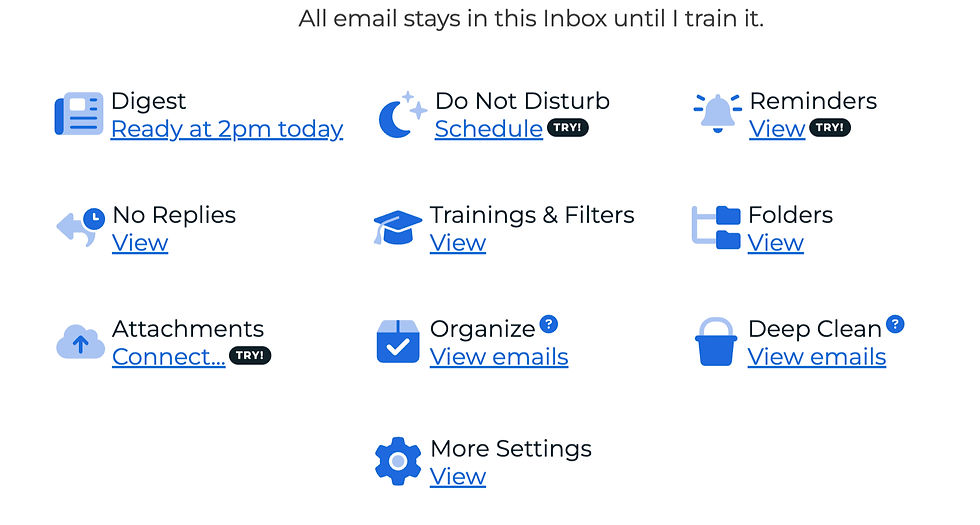
Sanebox sends me two daily emails that link to a page where I can keep or trash messages instantly. Like any AI, it requires training—but it took me less than two days to set it up. Now, I spend under 30 minutes on email daily. My inbox is clean, and I can drag unwanted emails into folders that simultaneously train the model, saving even more time in the future.
Task Management: Notion
Once emails are cleared, I dive into my task list on Notion.
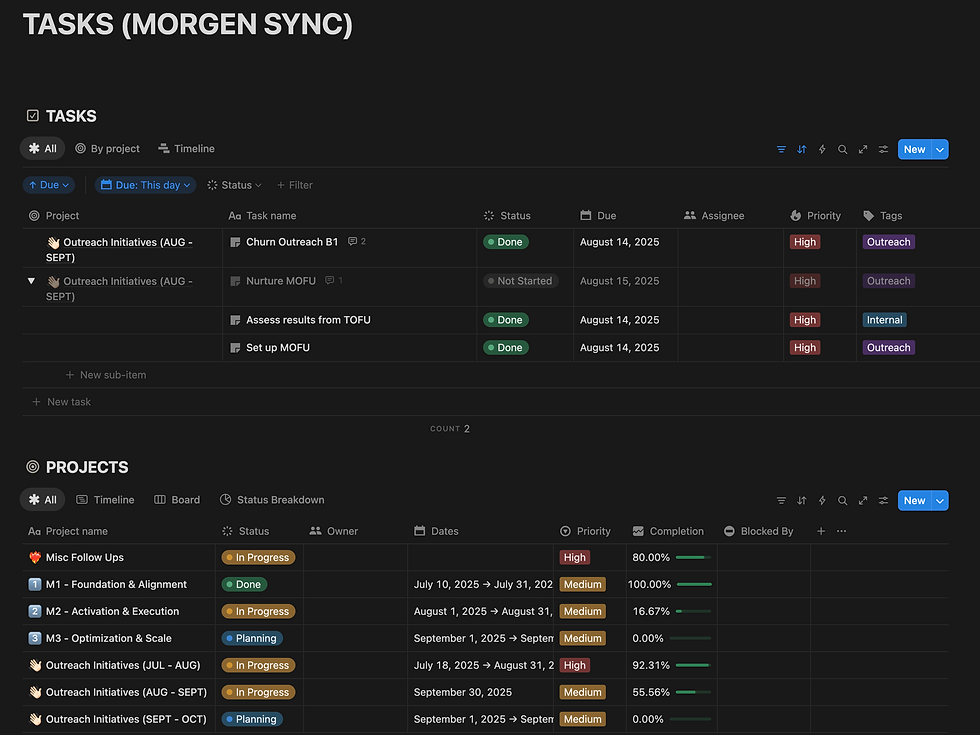
I’ve tried ClickUp before—it’s not a bad tool—but I found that deadlines were often ignored, and it didn’t effectively remind the team of what needed to be done. Eventually, my PA had to manually go through ClickUp and highlight overdue tasks.
With Notion, I downloaded a free task template and synced it with Morgen AI (more on that below). Tasks appear on my calendar by deadline, making them hard to miss. Once completed, I check them off in Morgen, and it syncs back to Notion—keeping both systems updated.
What Notion Offers:
All-in-one workspace for notes, tasks, databases, and project tracking
Customizable templates for daily planning, content calendars, and CRM
Real-time collaboration and synced databases
Integration Highlights:
Connects with Google Calendar, Slack, Jira, and more
Use Zapier or Make to automate workflows
Syncs with Morgen AI for time-blocking tasks directly into your calendar
Work Allocation: Morgen AI
To structure my day, I use Morgen AI—a smart calendar and planner I now swear by. I’ve even introduced it to teammates who’ve subscribed too.

If you’ve searched for AI project planners, you’ve probably come across Motion AI. It’s powerful and user-friendly, but it comes with a higher price tag. For me, since I run on iCal (not a fan of Google Calendar), options were limited. Morgen AI became the best fit—syncing with my existing stack, offering solid AI features, and staying within budget.
Key Features:
Combines calendars, task managers, and scheduling tools in one app
AI Planner with “Frames” balances deep work, quick wins, and personal time
Time-blocks tasks from Notion, Todoist, ClickUp, and more
Integrations:
Syncs with Google, Outlook, iCloud, and Fastmail
Adds Zoom, Teams, and Meet links automatically
Works across Mac, Windows, Linux, iOS, and Android
I especially love the confetti animation when I complete a task—it’s a small but satisfying touch. The interface is clean and intuitive, showing to-dos and overdue tasks across multiple calendars I’ve set up for different roles.
Lead Follow-Up: Nutshell CRM
For managing leads and customer relationships, I rely on Nutshell CRM. To be honest, I’ve never heard another solopreneur or entrepreneur mention it. I only discovered it because I was highly specific about what I needed.
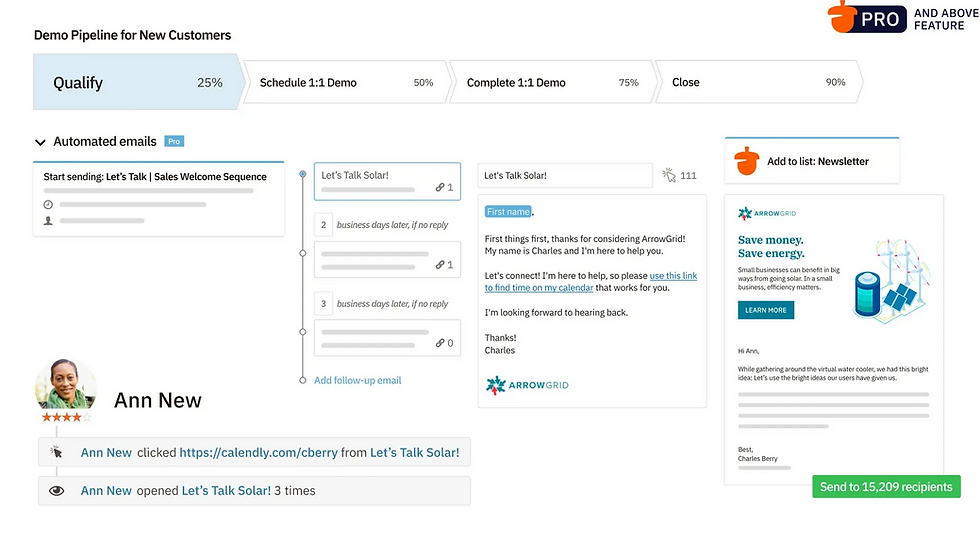
I used to operate with Mailchimp for EDMs, Excel for tracking, and Monday.com for monitoring leads. As a solopreneur, I don’t have a mountain of leads, but over the years, it became increasingly difficult to log follow-ups. I didn’t want to keep checking multiple platforms.
I’ve tried Salesforce, but it’s not user-friendly for someone like me—visually driven and a fan of drag-and-drop interfaces. I spent ages figuring out their pipeline and almost had to learn how to code. I also use HubSpot for clients, and honestly, I don’t understand the hype. Their contact import/export process is outdated (limited to 50 contacts per import), and segmenting EDM blasts is painfully manual. Plus, their email templates are limited, and graphic-rich newsletters are nearly impossible.
So when I searched for a tool that combined proper EDM capabilities with CRM functions, I landed on Nutshell CRM. While it still has occasional bugs (like formatting issues in EDMs), it offers everything I need—and more. I also appreciate how they keep users updated with product improvements.
What It Does
Tracks leads, sales pipelines, and customer interactions
Offers email automation and built-in scheduling
Provides detailed reporting and lead scoring
Integration Power
Connects with Gmail, Outlook, Slack, QuickBooks, and Calendly
Syncs with marketing tools like Mailchimp and Zapier
Embeds forms and landing pages to capture leads directly
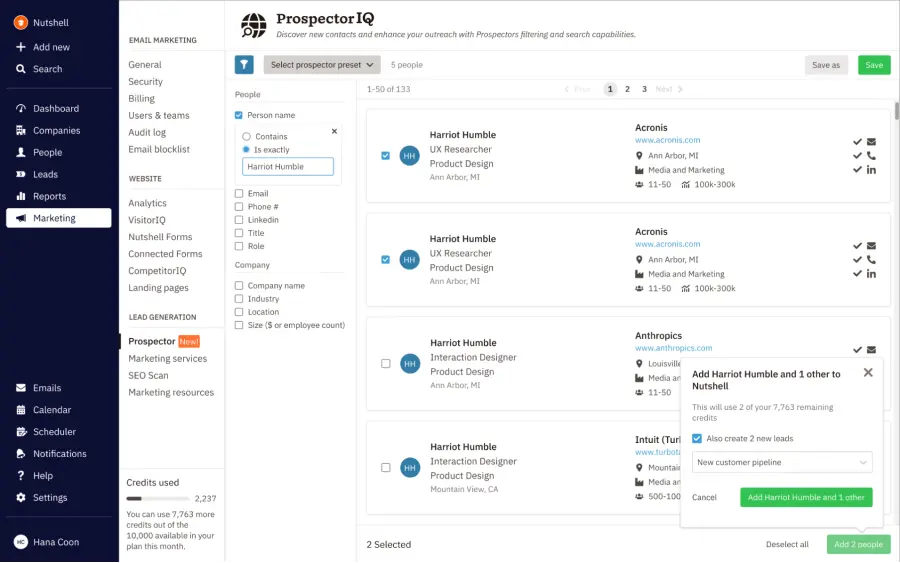
One of their latest features is Visitor IQ, which I love. It tracks the company, duration, and pages visited on your website. You can buy credits to unlock contact details and add them directly to your email sequences. Their pipeline setup is intuitive, with sequencing, forms, and landing page capabilities. I use it for VIP email sign-ups, and it works like a charm.
Content Scheduling: Loomly
When it’s time to plan and publish content, Loomly is my go-to. I was a fan of ContentCal, but since Adobe acquired it, it’s lost its charm.
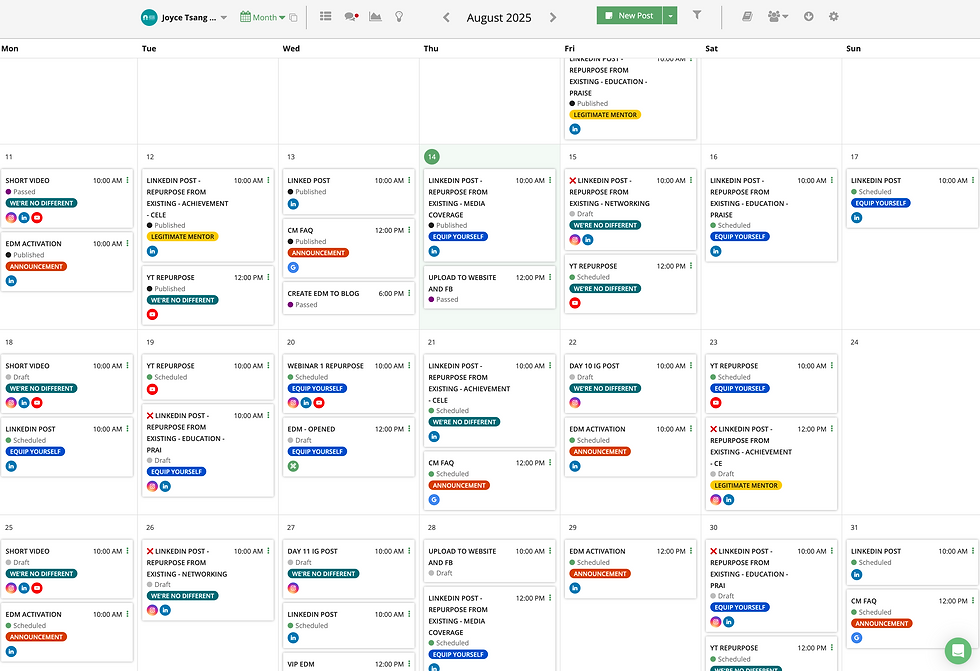
I’m very particular about content scheduling. Most entrepreneurs focus on how many platforms a tool connects to and whether it acts as a DAM and automates posts. That’s fine—but as a content marketer, one of my must-haves is tagging. I need to tag each post with relevant content pillars to ensure I’m creating the right mix every month. Color-coded tags are essential, and Loomly delivers.

Their pricing is friendly, and I can invite users without extra cost. The approval workflow is solid—I’ve added client calendars and asked freelance writers to submit work directly through Loomly, avoiding the whole Excel-Google-Word chaos.
Features I Love
Unified content calendar across all social platforms
Real-time post suggestions and optimization tips
Built-in asset library and approval workflows
Integrations
Supports Facebook, Instagram, LinkedIn, TikTok, YouTube, Pinterest, and more
Connects with Zapier, Slack, and Google Drive
AI tools help generate captions and analyze engagement patterns
Research & Browsing: Arc Browser
For deep research and distraction-free browsing, I use Arc Browser. What I love most is the team behind it—they make every user feel special with early adopter badges and thoughtful marketing.

But beyond that, the browser setup just makes sense. I hate how other browsers open endless tabs. It’s fast, sure, but the interface gets overwhelming. I lose track of what I’ve opened, and organizing tabs via history or bookmarks isn’t intuitive.
Arc is different. It’s like setting up folders. I have folders for specific work, webinars, reading lists—you name it. The only downside is that some websites don’t recognize the browser and won’t load properly. But otherwise, it’s my go-to, all day, every day.
Why It’s Different
Vertical tabs and customizable workspaces
Split View for multitasking and side-by-side comparisons
AI tools like “Ask on Page” and tab renaming
Integration Highlights
Syncs across macOS, Windows, and iOS
Built-in ad blocking and privacy controls
Works with productivity tools like Notion and Google Docs
Internal Communication: Spot Virtual
For team vibes and casual chats, Spot Virtual brings the office to life—and it’s one of my favorites.
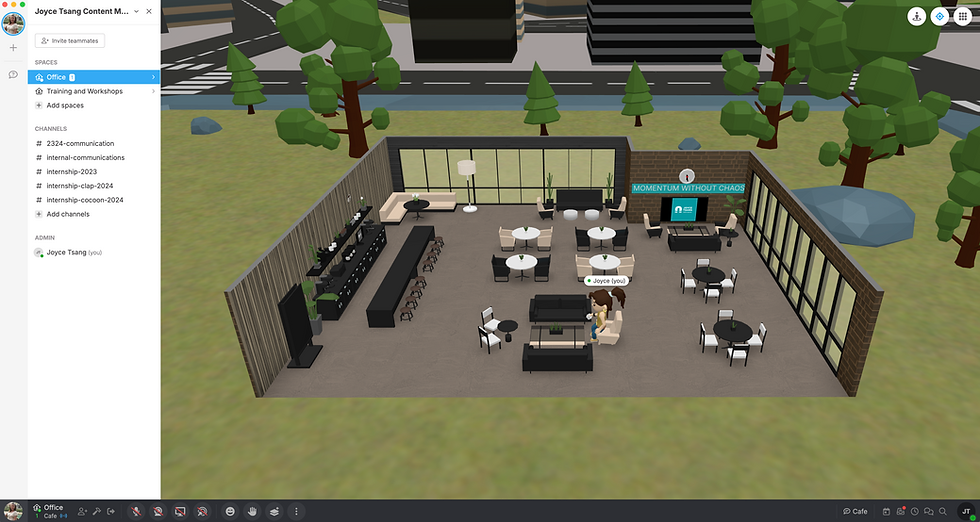
I constantly recommend Spot Virtual because it’s worth it. You can set up your avatar, create your own office, open lecture halls or meeting rooms, and invite teammates, attendees, or partners via a link. Meetings can start instantly—similar to Slack’s huddle feature. You can walk around the space and even play rock-paper-scissors with others.

One of my favorite setups is the lecture room. I’ve hosted multiple internship trainings there. Interns sit virtually, view the same shared screen, and have a completely different experience than a standard Zoom meeting.
Features That Stand Out
Virtual office with walk-up conversations and meeting rooms
Simultaneous screen sharing and shared browser sessions
Fun zones for team bonding—music, memes, and more
Integration Highlights
Works with Slack, Zoom, and Microsoft Teams
Role-based permissions for secure access
No links needed—just walk into a virtual room
This is a long list, but I use even more tools daily.

If you’re into this kind of content, give me a like or drop a comment! I’ll be sharing more insights on how to boost your effectiveness and organize your work as a solopreneur running multiple businesses—just like me.
If you’re aspiring to become a Slasher or Solopreneur and need a hand establishing your story and content, consider this!
Or, if you found this article helpful—not just for solopreneurs but also for your in-house team—click here to explore the Upskill training programs I offer.




Comments